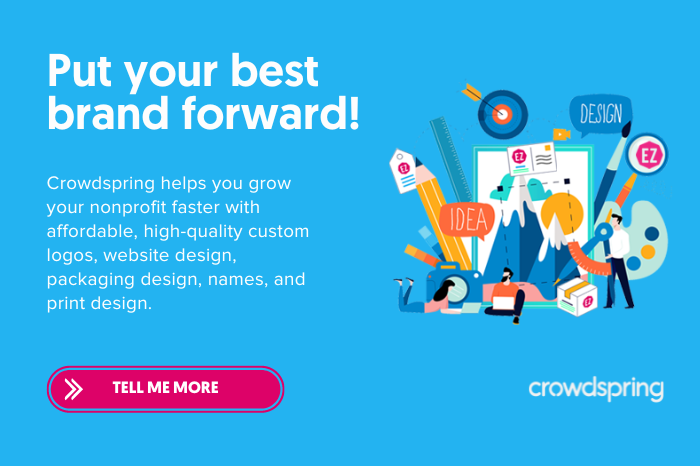Nonprofit Marketing: How to Engage Donors and Volunteers with Retargeting Ads

When nonprofits run into budgeting constraints, their first instinct is to roll back their marketing strategies.
While this may seem an effective way to cut corners, it’s short-sighted.
Nonprofits need a lean marketing approach with high-ROI strategies. One cost-effective strategy that has been proven to drive value is retargeting ads.
What is retargeting?
Retargeting is a form of digital advertising that allows you to reach people who have already interacted with your website and encourage them to convert into supporters.

Research shows the average click-through rate for retargeted ads is roughly ten times higher than traditional display ads. Even better, over 90% of marketers report that retargeting often works better than other forms of advertising like email and search.
If you’ve noticed recurring ads floating around the web and wondered how your nonprofit could use the same technique to secure event registrations or new donors, you’re in the right place. This guide will cover everything you need to know about retargeting ads, including:
- What are retargeted advertisements?
- When to use retargeted advertisements
- Creative tips for nonprofit advertisements
With an in-depth look at retargeting campaigns, your nonprofit will be equipped to acquire new donors and recapture the ones who got away. But first, let’s get started with the basics.
What are retargeting ads?
Retargeting ads are served to users who previously visited your nonprofit's website but didn't complete a conversion. These ads are designed to drive website and campaign traffic back to your organization's online resources and encourage users to complete an action like donating or signing a form.

We’ve all encountered retargeting ads. Whether looking at a pair of shoes or browsing for a new phone online, it’s common to see an ad for those same products while scrolling through social media or other sites across the web.
While retargeting may seem like a marketing tactic for only for-profit companies, it’s a powerful resource the nonprofit sector should leverage.
Imagine a potential donor who views your nonprofit’s fundraising page but leaves before donating. Then, as they scroll through social media, they see an ad for that fundraiser with a compelling lead like “We missed you!” Even if they’re unsure about donating, this retargeting strategy will remind them of the donation they never completed and keep your mission at the forefront of their minds.
According to Feathr’s nonprofit advertising guide, here’s how retargeting ads work:
- People visit a crucial page on your nonprofit’s website, whether it’s your donation form, volunteer sign-up page, annual report, or event registration page.
- They leave that page, navigating elsewhere on the web or closing their browser altogether, before converting as a supporter for your cause.
- Your nonprofit sets up an ad campaign that places a small code on people’s devices who’ve bounced from pages on your site.
- The campaign sends out a set number of digital ads across the internet for the next week, month, or another set period.
- Users see your nonprofit’s ads in the margins of other websites — while reading the news or looking up a recipe. These ads point them back to your website, encouraging them to return to your landing page.
- They end up clicking on these ads, returning to your site and providing meaningful support to your nonprofit.
This strategy works because your audience has already shown interest in your cause. That’s how they ended up on your landing page in the first place. Rather than posting an ad to be seen by everyone on the internet, you’re retargeting ads to remind supporters that your nonprofit is still there and in need of their help.

We just emailed you info about the Give Back program.
When to use retargeted advertisements
Although retargeting supports any goal involving users completing an action online, your nonprofit needs to clearly define the desired outcome of retargeted ads. That way, your nonprofit will remain focused on driving results rather than just spreading ads across the web.
For example, retargeting based on the bounce rate on your organization’s homepage may not be the best use of your resources, nor will it provide the highest ROI for your campaign.
Instead, you should use retargeted ads when your organization launches or pushes a specific campaign. Consider retargeting in the following scenarios:
- When you launch a new fundraising campaign, your primary goal is to spread your message to the people who are most likely to interact with and support you. That means you must retarget your ads to reach audiences where they are, whether on social media or the open web. Even if prospects don’t convert immediately, seeing your ads will build brand awareness and keep your nonprofit’s name fresh in their minds.
- During the lead-up to a critical fundraising event: Let’s say your nonprofit is promoting a fundraising event requiring supporters to register using a form on your nonprofit website or on your event ticketing platform. If you notice supporters clicking away without taking action, you can send retargeted ads that point back to that online form. After a few impressions, they will likely click on the ad and register for the event.
- During your year-end push for your annual campaign: One of the main goals of annual fundraising is to deepen existing donor relationships. In your year-end push, you must reach existing donors you know will give again. With retargeted ads, you can segment supporters based on their past giving history and serve relevant ads that drive more donations.
- After you enter the public phase of a capital campaign, your nonprofit is focused on expanding your marketing and fundraising efforts to reach a much wider audience of donors and community members. Retarget your crowdfunding and peer-to-peer ads to maximize your efforts.
Retargeting is an additional tool in your advertising and marketing toolkit that can significantly impact your short- and long-term strategies. When used correctly, these ads can help your nonprofit raise brand awareness, increase donations, and facilitate conversions.
It’s also an effective way to increase your organization’s acquisition rate because retargeting is hyper-focused on engaging your new supporters.
After you’ve acquired these supporters, you should focus on stewardship, encouraging them to get involved with other aspects of your cause and strengthening their relationship with your nonprofit.
Creative tips for nonprofit advertisements
Your nonprofit knows that advertising plays a vital role in driving people to your website. But what if those visitors aren’t ready to donate, volunteer, or register when they first reach your landing pages?
That’s when you have to get creative.
As you produce ads for your retargeting campaign, your organization should prioritize grabbing your audience’s attention. Remember that past supporters and potential donors will see these ads alongside other web content, so you must draw them in with a compelling design.
Here are some creative tips that are guaranteed to make your ads stand out:
- Employ email marketing. Leverage email marketing to increase the effectiveness of retargeted ads. Send past supporters an email with the same lead as your retargeted ads, such as “We hate goodbyes,” and direct them back to your mission. This can effectively drive traffic to your donation pages. Emails are critical because a growing Gen Z audience has learned to tune out most advertising. You need more innovative strategies to reach those donors.
- Ensure consistent nonprofit branding. Follow your organization’s established brand guidelines, including the colors, fonts, and logo that visually represent your organization. When supporters come across an ad on another site or social media, you want them to recognize that it’s associated with your cause immediately.
- Relate the ad to a specific campaign. Keep the ads narrowly focused. For example, if you’re retargeting supporters who had visited an event registration page, you might remind them of an event highlight or keynote speaker to pique their interest.
- Keep your message short and sweet. Retargeted ads are not the place for long-form content. Since they often appear in the sidebar or bottom of an existing web page, you should use very little text so that users can read and absorb the information with a glance.
- Make it clear where you’re directing supporters. Indicate which page you’re directing your audience to with messages like “Forget something? Finish your donation today.” Supporters will know that this link leads to a donation page. Plus, your nonprofit will appear authentic and less scammy.
- Add a call to action. One of the essential elements of an ad is its call to action (CTA). This is what directly encourages people to click through to your website. Use strong action words like “Sign Up Now” or “Donate Today.” These short CTAs are not only persuasive but also necessary, given the character limits on ads.
Once your retargeting campaigns are up and running, track your metrics and review the ads that successfully resulted in conversions. This will give you a better understanding of who you’re trying to target and how to best recapture them over time.
To maximize your nonprofit’s reach, it’s essential to use a comprehensive digital marketing strategy with high-ROI activities that include retargeted ads. Developing a multi-faceted marketing approach will help you engage with your supporters and encourage them to take even more action down the road.
Design Done Better
The easiest way to get affordable, high-quality custom logos, print design, web design and naming for your business.
Learn How to Grow Your Business With Beautiful Design
